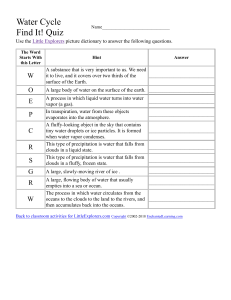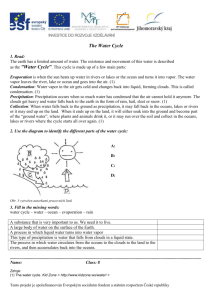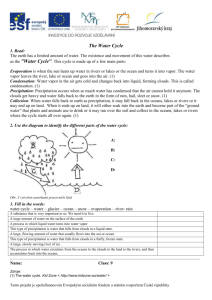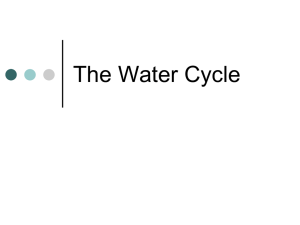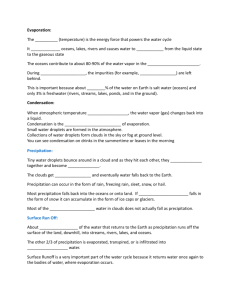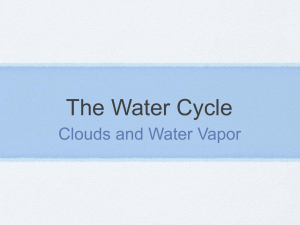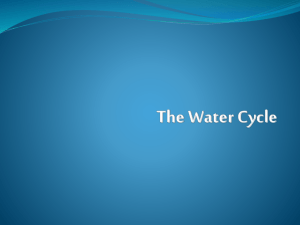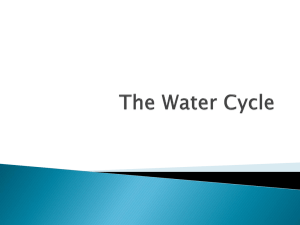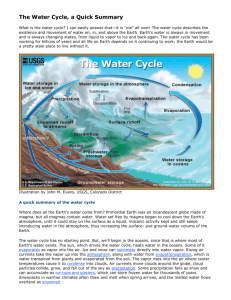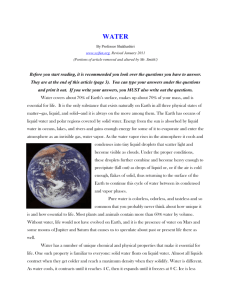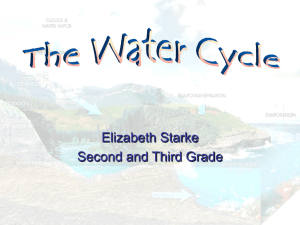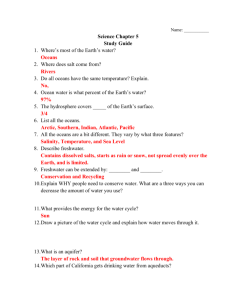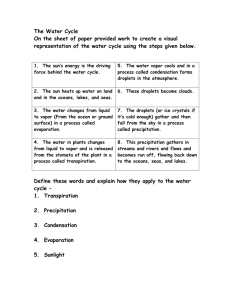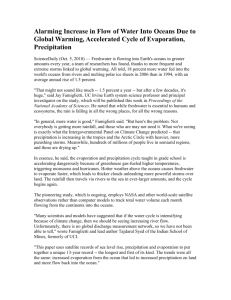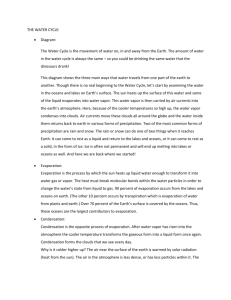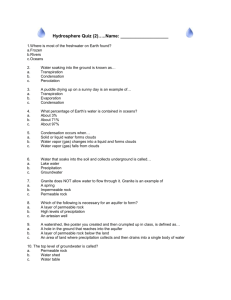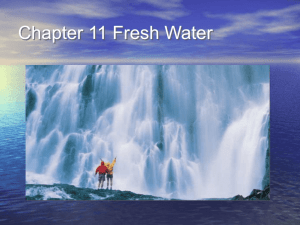click here
advertisement
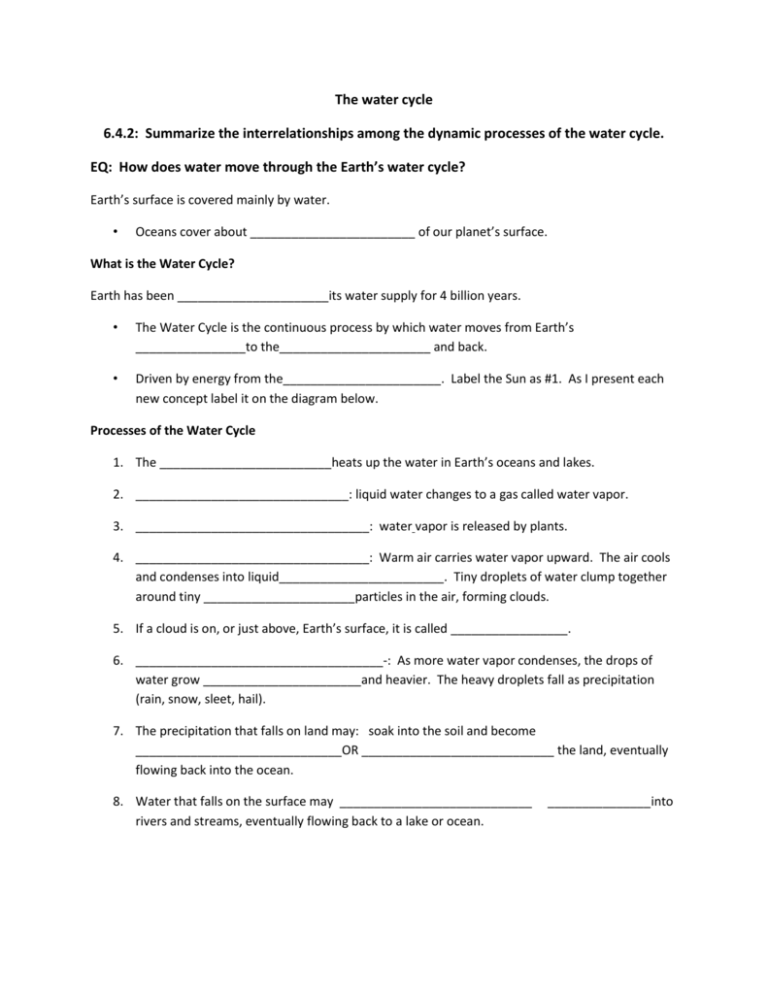
The water cycle 6.4.2: Summarize the interrelationships among the dynamic processes of the water cycle. EQ: How does water move through the Earth’s water cycle? Earth’s surface is covered mainly by water. • Oceans cover about ________________________ of our planet’s surface. What is the Water Cycle? Earth has been ______________________its water supply for 4 billion years. • The Water Cycle is the continuous process by which water moves from Earth’s ________________to the______________________ and back. • Driven by energy from the_______________________. Label the Sun as #1. As I present each new concept label it on the diagram below. Processes of the Water Cycle 1. The _________________________heats up the water in Earth’s oceans and lakes. 2. _______________________________: liquid water changes to a gas called water vapor. 3. __________________________________: water vapor is released by plants. 4. __________________________________: Warm air carries water vapor upward. The air cools and condenses into liquid________________________. Tiny droplets of water clump together around tiny ______________________particles in the air, forming clouds. 5. If a cloud is on, or just above, Earth’s surface, it is called _________________. 6. ____________________________________-: As more water vapor condenses, the drops of water grow _______________________and heavier. The heavy droplets fall as precipitation (rain, snow, sleet, hail). 7. The precipitation that falls on land may: soak into the soil and become ______________________________OR ____________________________ the land, eventually flowing back into the ocean. 8. Water that falls on the surface may ____________________________ rivers and streams, eventually flowing back to a lake or ocean. _______________into How is Earth’s Water Distributed? • About _________________ of Earth’s water is salt water found in oceans. • Only _______________freshwater. • Oceans: the Pacific, Atlantic, Indian, and Arctic Oceans are all interconnected, covering the majority of Earth’s surface. _________________________: most of Earth’s freshwater is locked in thick sheets of ice near the Earth’s poles. • __________________________ and ______________________: Only 0.02% of Earth’s water, but an important source of freshwater for people who live near them. • ____________________________: water that fills the cracks and spaces in underground soil and rock layers. Summarize the essential question. The ______ powers the _______________________ _________________________. Water vapor _______________________to form clouds. Clouds produce _________. Precipitation either becomes _______________ ________________ or ____________________ _________________ into lakes and streams. Water _____________________ from the land and bodies of water. Water also leaves plants through a process known as _____________________________. The cycle begins again. Use the words to label each part of the water cycle. Transpiration Sun Evaporation Condensation Precipitation Run off Use your notes to answer the questions. 1. What powers the water cycle? 2. Why does run-off occur? 3. What happens to all surface and ground water? 4. How does water enter the atmosphere? 5. What determines the type of precipitation that occurs? 6. What part of this cycle would be the opposite of precipitation? 7. Without these two things, the water cycle would not exist. What are they?
